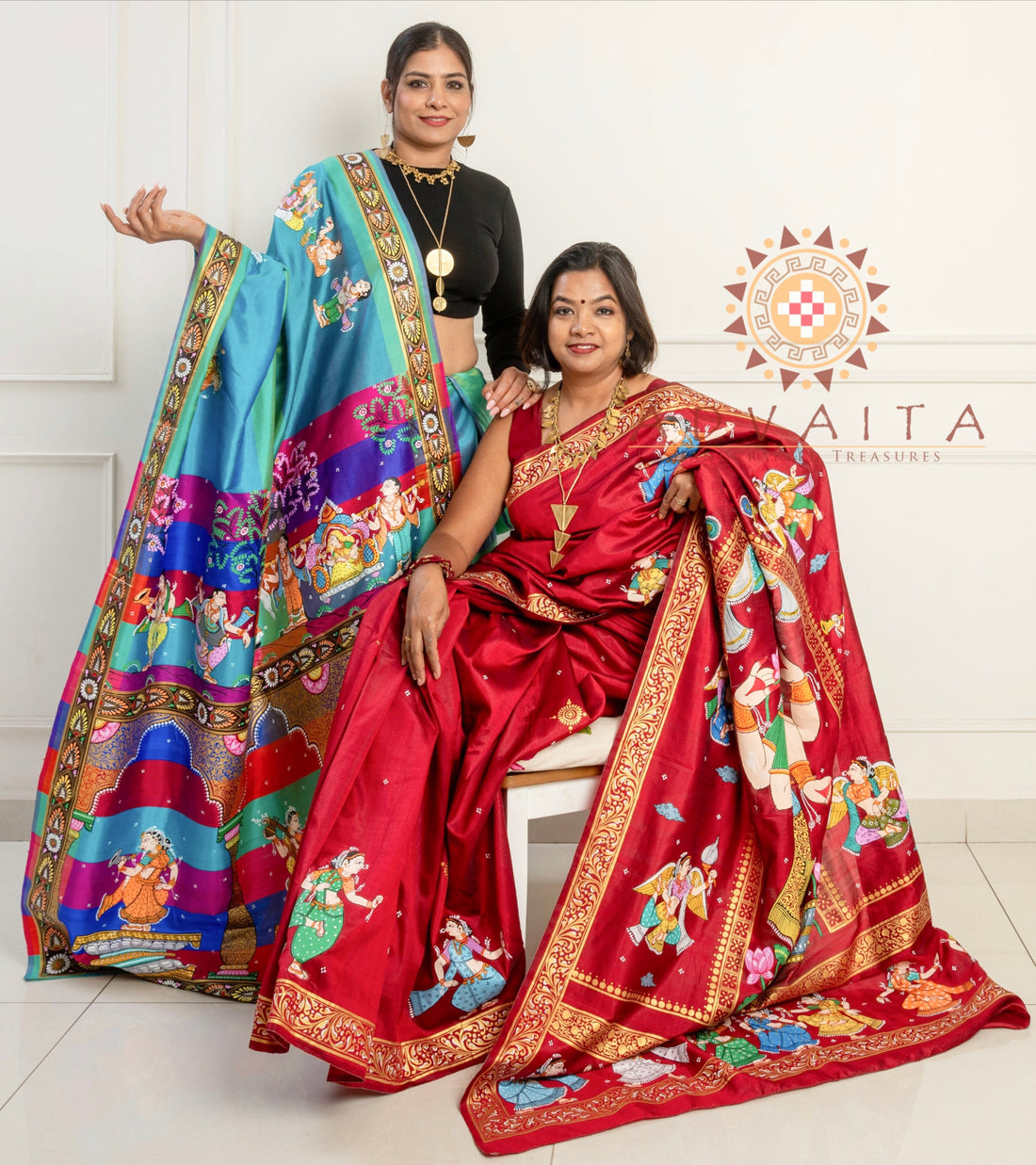What's almost synonymous with India and the Indian subcontinent? It's the Saree!
There are 2 things I love shopping for immensely, or should I say spending my time looking at immensely - Books and Sarees. In the past, I never ended up buying sarees for personal use - (I'm a very conscious shopper and I buy only when I know I will do complete justice to my purchase by wearing it as often as possible). But now my business gives me the excuse of buying them for business :) and only a saree lover can understand what joy that is!!
Books I have to buy, but I thank kindle that I do not have to buy physical books too much now as again space is a luxury in Mumbai and I'm beyond my hoarding days. Also, I like to think of it as my bit in saving paper and trees.
Back to sarees then. Sarees are my true love. I can sit for hours looking at them, touch and feel them, look at the weaves - upfront and reverse, drape them loosely, run my hands over it lovingly, look at it wistfully and turn away. I do this at almost every stall at every handloom exhibition and for some reason the stall owners do not seem to mind me. They're happy to explain the intricacies of these beauties to a true admirer like me :) Hidden details like where the ghicha threads are in the pallu, a cotton border but a linen body, a blouse piece with a different weave compared to the pallu - there can be many hidden secrets in just one saree.
What I really love about the Saree is that it is unstitched and a free flowing drape with no stitches anywhere and thus totally flexible, pliable and happy to be draped any which way on our bodies. In fact, many experts and saree pros, announce that even safety pins needn't be used to pin the pallu in place. It complements the wearers shape - no matter what the body type. Unlike other garments, it does not dictate or overpower us demanding a specific body shape or type. Also, there's something sexy and graceful about it. whoever wears it looks statuesque, elegant and dignified.
Sarees also make a case for Women empowerment - especially the handloom sector. The preparation of threads, the spooling of the yarn, the loading into the shuttle and even running the looms - women participate in many of these activities. Infact, women consist of 71% of workforce of the handloom sector. Further, handloom weavers are mostly cluster based, addressing the larger issue of migration to urban locations.
History of the Saree
A sari also referred to as saree or 'sadi' is a women’s garment from the Indian subcontinent which consists of an un-stitched stretch of woven fabric arranged over the body as a robe, with one end attached to the waist, while the other end rests over one shoulder as a stole, sometimes baring a part of the midriff. It may vary from 4.1 to 8.2 meters (4.5 to 9 yards) in length, and 60 to 120 centimeters (24 to 47 inches) in breadth, and is a form of ethnic wear in Bangladesh, India, Sri Lanka, Nepal, and Pakistan. There are various names and styles of sari draping which have evolved over the years, the most common and current being the Nivi style (the red saree drape in pic). There are many more still prevalent today like the Gujarati style (blue saree drape in pic), the Kodagu style, Bengali drape etc.
The word sari evolved from śāṭikā (Sanskrit: शाटिका) is mentioned in early Hindu literature as women's attire. The sari or śāṭikā evolved from a three-piece ensemble comprising the antarīya, the lower garment; the uttarīya; a veil worn over the shoulder or the head; and the stanapatta, a chestband. This ensemble is mentioned in Sanskrit literature and Buddhist Pali literature during the 6th century BCE.

It was the state of Tamilnadu though, from where the garment evolved into a single piece of fabric from the 2 or 3 piece versions during the Vedic era. During the pre-colonial times, the saree was worn without any blouse or petticoat. Infact, there are many paintings that record this fact. It was a drape just covering the breasts loosely. I have seen my own grandmothers wearing the saree thus. After the British started ruling us, victorian prudery took over, and blouses with puffed sleeves and petticoats came into fashion. The common woman still wore her saree sans these, but royalty and upper class Indian women started to cover up.

World saree Day - The first attempt to create World Saree Day was made in 2009 by Indian social Activist Nalini Shekar, who wanted to revive sarees, showcase the versatility of the garment, and maintain its legacy. However, much could not be achieved. Another attempt was made but that too didn't catch on. Finally, the third World Saree Day was started by Indian journalist Nistula Hebbar and Dr. Sindhura Kaviti in 2020. This time the day gained nationwide recognition in India and soon outside of the country as well. It was even featured in Vogue India in 2022.
For a garment that evolved from around the Indus valley civilization, the saree has come a long way in staying relevant. For any Indian, man, woman or child, and for that matter most people around the world, the saree is a very recognizable symbol of the Indian subcontinent and we can be proud of that.

